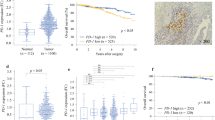Abstract
Objective: The purpose of this study was to determine whether the decrease of WBC is correlated with the increase of apoptosis induced by cytotoxic drugs in patients who received neoadjuvant polychemotherapy for ovarian cancer and whether the reduction of peripheral blood WBC can be predicted by the detection of apoptosis. Methods: The study included 25 patients who received neoadjuvant polychemotherapy for ovarian cancer after operation. Total 2 ml of venous blood was collected from these subjects within 24 hours before chemotherapy and at the fifth day after the beginning of chemotherapy. Peripheral blood WBC count was performed and its apoptosis was analyzed using flow cytometry (FCM) and DNA electrophoresis. Results: 68% (17/25) of the patients had a decrease in WBC after chemotherapy. The average counts of WBC were 5.19±1.36×109/L and 4.36±1.56×109/L, the distributions were 4.10–8.60×109/L and 2.00–7.90×109/L before and after chemotherapy respectively. At the same time, 64%(16/25) of the patients had an increase in apoptotic cells. The proportions of apoptosis were 4.01±2.59% and 5.66±1.36%, the distributions were 1.05–11.02% and 0.8–14.08% before and after chemotherapy respectively. Both the decrease of WBC and the increase of apoptosis were statistical significant (P<0.05). The coefficient between the decrease of WBC and the increase of apoptosis is 0.646(P<0.05). The sensitivity of the quantitative analysis of apoptosis using FCM for clinical early diagnosis of the decrease of WBC is 82%, the speciality is 75% and the accuracy is 80%. Conclusion: The increased apoptosis induced by cytotoxic drugs contributed to the chemotherapy-associated reduction of WBC at some extend, there were somewhat correlation between them. The detection of peripheral apoptosis could be of some help to assess the decrease and scientific bases for the administration of G-CSF, GM-CSF to obtain the optimal cost-effectiveness of clinical chemotherapy.
Similar content being viewed by others
References
YuSuf AH. Apoptosis and the dilemma of cancer chemotherapy[J]. Blood 1997; 89: 1845–53.
Huschtscha LI, Bartier WA, Anderson CE, et al. Characteristics of cancer cell dearth after expose to cytotoxic drugs in vitro[J]. Br J Cancer 1996; 73: 54–60.
Kawada M, Ishizuka M. Development of a selective apoptosis inducer of solid tumor cells[J]. Biotherapy 1998; 12: 967–73.
Blay JY, Chauvin F, Lecesne A, et al. Early lymphopenia after cytotoxic chemotherapy as a risk factor for febrile neutropenia[J]. J Clin Oncol 1996; 636–40.
Rahmanl Z, Eparer-guerar L, Yap HY. Chemotherapy-induced neutropenia and fever in patients with metastatic breast carcinoma receiving salvage chemotherapy[J]. Cancer 1997; 79: 1150–5.
Mackall C, Fleisher TA, Brown MR, et al. Lymphocyte depletion during treatment with intensive chemotherapy for cancer[J]. Blood 1994; 84: 2221–8.
Mackall CL, Hakim FRT, Gress RE. Restoration of T cell homeostasis after T cell depletion[J] Semin Immunol 1997; 9:339–346.
Pignata S, Vermorken JB. Ovarian cancer in the elderly[J]. Crit Rev Oncol Hematol 2004; 49: 77–86.
Karsten Stahnke, Simone Fulda, Claudia Friesen, et al. Activation of apoptosis pathways in peripheral blood lymphocytes by in vivo chemotherapy[J]. Blood 2001; 98: 3066–73.
Whyte MKB, Meagher LC, Macdemot J, et al. Impairment of Function in aging neurtrophils is associated with apoptosis[J]. J Immunol 1993; 150: 5124–34.
Johns S, Andrew HW, Janet EH. Macrophage phagocytosis of aging neutrophils in inflammation: programmed cell death in the neutrophils leads to its recognition by macrophages[J]. J Clin Invest 1989; 83: 865–75.
De vita VT. Principles of chemotherapy in cancer. In: De vita VT, Hellman S, RoSenberg SA, eds. Principles and Practice of Oncology[M]. Philadelphia: Lippincott 1985; 266–7.
Okunewick JP, Mash JC. Myelosuppressive effects of antineoplastic drugs.[J]. Exp Hematol 1985; 13(suppl 16): 1–122.
Appelbaum FR, Herzig GP, Ziegler JL, et al. Successful engulftment of cryoproserved autologous bone marrow in patients with malignant lymphoma[J]. Blood 1978; 52: 85–95.
Sheridan WP, Boyd AW, Green MD, et al. High dose chemotherapy with busulphan and cyclophosphamide and bone marrow transplantation for drug-sensitive malignancies in adults: preliminary reports[J]. Med J Aust 1989; 151: 379–86.
Gulati SC, Shank B, Black P, et al. Autologous bone marrow transplantation for patients with poor-prognosis lymphoma[J]. J Clin Oncol 1988; 6: 1303–13.
Philip T, Armitage O, Spitzer G, et al. High-dose therapy and autologous bone marrow transplantation after failure of conventional chemotherapy in adults with intermediate-grade or high-grade lymphoma[J]. N Engl J Med 1987; 316: 1493–8.
KirK JL Jr, Greenfield RA, Slease RB, et al. Analysis of early infections complications after autologous bone marrow transplantation[J]. Cancer 1988; 62: 2445–50
Liles WC, Rodger ER, Dale DC. In vivo administration of granulocyte colony-stimulation factor(G-CSF) to normal human subjects: primiting of the respiratory burst and inhibition of apoptosis in neutrophils[J]. Blood 1994 (abstr, suppl 1); 84: 24a.
Spiekermann KJ, Emmendverffer AJ, Elte K. Function features of neutrophils induced by G-CSF and GM-CSF treatment: Differential effect and clinical implications[J]. Leukemia 1997; 11: 466–78.
Hidaka T, Fujimura M, Sakai M, et al. Macrophage colony-stimulating factor prevents febrile neutropenia induced by chemotherapy[J]. Jpn J Cancer Res 2001; 92: 1251–8.
Shimizu Y, Utsugi K, Umezawa S, et al. Effect of human urinary macrophage colony-stimulating factor on the immune functions and the blood cell counts in patients with ovarian carcinoma receiving cytotoxic chemotherapy[J]. Oncol Rep 2001; 8: 767–72.
Wu JQ, Shi MQ, Feng JF. The clinical observations on G-CSF administration to protect the reduction of granulocytes[J]. Chin Clin Oncol 2002; 7: 100–1.
Alexei Chukhloin. Enhanced ex vivo apoptosis of peripheral granulocytes is a sufficient factor of neutropenia following myeloablative chemotherapy[J]. Leukemia Res 2000; 24: 507–9.
Author information
Authors and Affiliations
Corresponding author
Additional information
Biography: SHEN Jiao(1975–), female, candidate for doctor of medicine, Medical School, Osaka University, Japan; majors in Gynecology.
Rights and permissions
About this article
Cite this article
Shen, J., Yao, Jf., Wei, Zl. et al. The correlation between increased apoptosis and decreased peripheral blood WBC in patients receiving chemotherapy for ovarian cancer. Chin. J. Cancer Res. 16, 131–136 (2004). https://doi.org/10.1007/s11670-004-0012-z
Received:
Accepted:
Issue Date:
DOI: https://doi.org/10.1007/s11670-004-0012-z




